2022 World Cup Qualifiers: Croatia and Russia to Meet at Poljud in November
July 20, 2021 - Croatia and Russia will meet at Poljud Stadium in Split to close out the 2022 World Cup qualifiers in Group H.
The Croatian Football Federation Executive Board has registered Poljud Stadium as the host of the Croatia and Russia match as part of the European qualifiers for the FIFA World Cup, which will be held in Qatar in 2022, reports HNS.
Croatia and Russia have played four times so far, with Croatia recording two wins and two draws. Recall, Croatia and Russia most recently met in the quarterfinals of the 2018 World Cup at Fisht Stadium in Sochi. The match finished 1:1 thanks to a goal by Kramarić before going into extra time when Vida scored for the 2:1 lead. Fernandes equalized in the final minutes, forcing to game to penalties. Rakitić scored the winning penalty, advancing Croatia to the semifinal match against England.
Split will host two Croatia national team matches this fall - on September 7, Croatia will host Slovenia on Poljud (20:45), and the competition in Group H will end on November 14 at 15:00 against Russia. In other news, the 2018 World Cup finalists will host Slovakia on October 11 at City Garden Stadium in Osijek.
After the introductory three rounds in March, the Croatia national team leads in Group H with six points, the same number of points as Russia, while Slovakia is one point behind. Croatia is expected to play against Russia (September 1) and Slovakia (September 4) in September, and the three-match program will end in Split against Slovenia.
The 10 first-placed national teams in their groups will qualify directly for the World Cup, while the second-placed national teams will compete in the playoffs in March 2022. The 2022 World Cup will be held in an untraditional term, from 21 November – 18 December 2022.
To follow the latest sports news in Croatia, follow TCN's dedicated page.
To learn more about sport in Croatia, CLICK HERE.
Fountain of Youth May Come from Split-based Biotech Company: Meet Cell Culture Lab
July 19, 2021 - French scientist Dr. François-Xavier Pellay and Belgian businessman Ronny Haesen are behind Split-based Cell Culture Lab, providing science's top anti-aging therapies to local clinics!
Split is very well known for its historical palace and its beautiful Riva, and its economy is mostly centered around tourism. But tourism itself is evolving as more and more people are coming to Croatia to benefit from its very competitive pricing and high-quality medicine, particularly dentistry and aesthetic medicine.

Dr. François-Xavier Pellay
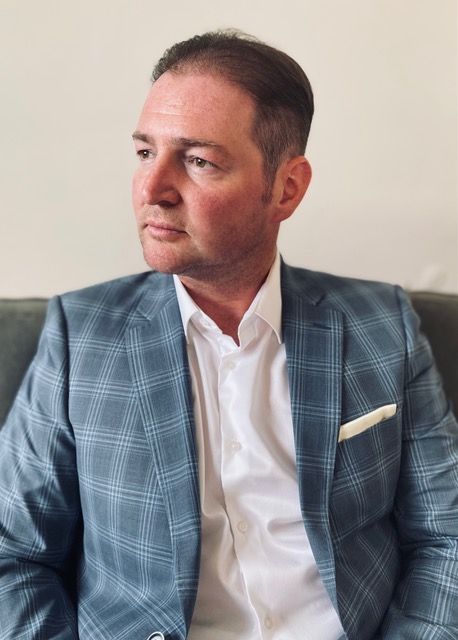
Ronny Haesen
Last year, in the middle of the Covid crisis, a new biotech startup was created to broaden even more this new wave of medical tourism. Cell Culture Lab d.o.o. (CCL), a company co-founded by a French scientist, Dr. François-Xavier Pellay, and Belgian businessman, Ronny Haesen, is now working with local clinics to provide anti-aging therapies at the top of what science has to offer today.

The company is based on the original research of Dr. Pellay, who is an expert in aging biology and particularly in anti-aging and rejuvenation medicine. His research, mostly done in Croatia, has led to the discovery of ways to rejuvenate human cells. Such research is to be applied in aesthetic medicine for skin rejuvenation and long-term anti-wrinkle treatment.
As we are all well aware, skin quality decreases with age, with the most obvious sign being the apparition of wrinkles and the loss of skin elasticity. These signs of skin aging are mostly due to the loss of fibroblasts, the main cells of the dermis, which are like skin factories for the production of collagen, elastin, and hyaluronic acid.
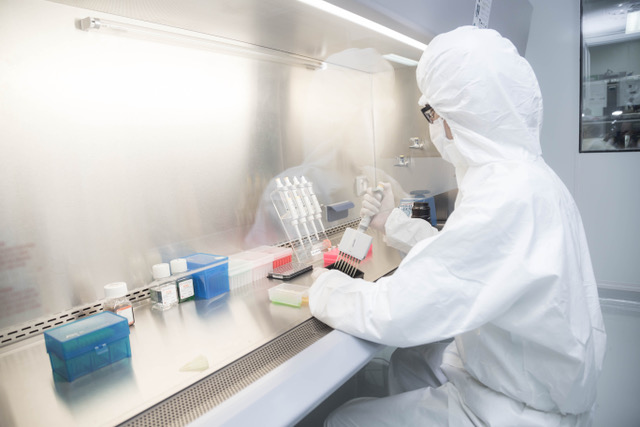
Shutterstock / Cell Culture Lab
Dr. Pellay’s skin rejuvenation treatment is based on the possibility to reinject your own rejuvenated fibroblasts to replace the ones lost with age. This kind of anti-aging therapy for the skin is quite different from the usual fillers and mesotherapy available today. Botox and Hyaluronic acid treatment, which are the most popular and most efficient ways to reduce wrinkles almost instantly, have the main disadvantage that they only last for a few months, in the case of botox, and are not free of possible side-effects. Most importantly, they don’t make the skin younger; they make it look younger.
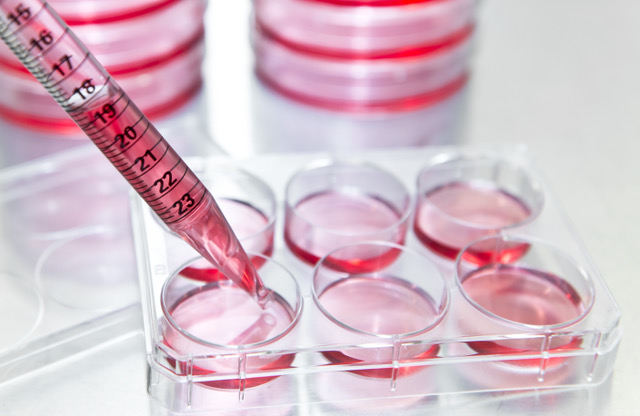
Shutterstock / Cell Culture Lab
On the other hand, this biotechnological approach for skin rejuvenation is completely natural since it uses people's own cells and is based on bringing the skin back to where it was 10 to 15 years ago.
A year after its creation, this Split based company is now on the verge of becoming a multi-national company with developments in the USA, UAE, Singapore, Hong Kong, and Japan.
CCL is also actively working on the next step of what could be brought by their cellular rejuvenation technology. The possibilities are enormous, but their next product will probably be stem cells, in particular mesenchymal stem cells, for which a lot of applications are already on the market for regenerative medicine. Rejuvenating these cells before using them could have tremendous potential and bring us one step closer to the fountain of youth.
More info can be found on their website www.cellculturelab.eu
For more on lifestyle, follow TCN's dedicated page.
Split-Dalmatia County Tourist Board Director: Either Ban Everything or Respect Measures
July 19, 2021 - Split-Dalmatia County Tourist Board director Joško Stella wants to make sure we save the season in Dalmatia, even if tougher measures need to be taken.
The situation in Split-Dalmatia County is especially worrying, as Saturday counted more cases than Friday, atypical for the weekend. Namely, there were 51 new cases in the County on Saturday, which makes up half of the cases in Croatia on Saturday.
If the county turns red, Joško Stella, director of the Split-Dalmatia County Tourist Board, says one thing is simple - either ban everything or respect the measures, reports Dalmacija Danas.
We are in the midst of the tourist season. The first 17 days of July recorded better results than the first six months. The County recorded 1,942,000 overnight stays which is 54% more than last year, and at the 2019 level, it is 65%.
Those are great results. If there is an increase in the number of cases, he says, the plan is to activate the Headquarters and see how to resolve the situation. Both national and local must be involved, Stella pointed out.
"It’s summer, there are a lot of events on the coast. Should everything be banned, the answer is that the matter is simple - either everything should be banned or measures need to be taken. We also have experience with the Olympic qualifiers, where the measures were taken well and there were no infected people and we have other situations where the measures were not followed and there was an infection.
The most important thing is that everything is controlled and that people are responsible. I call on everyone to take personal responsibility because we will maintain our spot in the orange as long as possible and try to go back to the green," he added.
The Headquarters is the one who decides on the measures and is not easy for everyone to be satisfied. Someone will profit more, someone less, but we are going to try to extend the season as much as possible, he concluded.
Just to give insight into how well the season is going so far, last weekend, the Split Ferry Port counted 50,000 passengers and 12,500 cars.
"Considering all the circumstances surrounding the current epidemiological situation, we must be satisfied because our turnover is 68 percent compared to 2019.
We don't like color changes, from green to orange, and maybe to red. We hope that the situation will return to normal if everyone adheres to epidemiological measures. Certainly, we are recording positive growth in traffic in the port of Split, so let it stay that way," said Jelena Ivulić from Jadrolinija.
For all you need to know about coronavirus specific to Croatia, including vaccination points and testing sites, make sure to bookmark our dedicated COVID-19 section and select your preferred language.
Split Ferry Port Traffic at 68% of 2019, 50,000 Passengers Expected Over Weekend
July 18, 2021 - Split Ferry Port traffic is rising, with 50,000 passengers and 12,500 cars expected over the weekend!
It is the third weekend in July when traffic jams are expected everywhere on the coast and inland. This Saturday in Split saw the usual scenes of congestion from Pazar, over to the Ferry Port, and the bridge at Bačvice, where Split's eternal summer traffic jam was in full force, reports Slobodna Dalmacija.
However, the conditions are rather good considering the current works on the extension of the City Port.
Despite everything, short-term crowds in the port are created only before and after the vehicles leave the ferry, which Jelena Ivulić from Jadrolinija confirmed.
"Considering all the circumstances surrounding the current epidemiological situation, we must be satisfied because our turnover is 68 percent compared to 2019.
This weekend we expect about 50 thousand passengers and 12,500 vehicles in the Split Ferry Port. On Friday, we had an extra line to Supetar, and here and now, an extra line is going in the same direction.
Our ferries are full in both directions, actually, and there aren’t any major delays except when disembarking, but that’s resolved quickly. It is very lively here, we work 24 hours a day, and everyone is in their place, from the employees of Jadrolinija to the Port Authority and the police," Ivulić said.
She added that all ferries are well filled, mostly for the islands of Brač, Hvar, and Vis, and considering the night shifts, drivers know how to wait for the first ferries overnight in the port to avoid the crowds in the heat.
"We don't like color changes, from green to orange, and maybe to red. We hope that the situation will return to normal if everyone adheres to epidemiological measures. Certainly, we are recording positive growth in traffic in the port of Split, so let it stay that way," Ivulić said optimistically.
For more on travel in Croatia, follow TCN's dedicated page.
Injured Turtle in Korčula Bay: Rescued, Treated, Ready For New Life
July 17, 2021 - An injured turtle in Korčula Bay sparked immediate action by locals and vets, seeing the turtle being saved and getting a second chance.
Like many other places, towns, locations, and neighborhoods, Korčula also has groups on social media to ease communication among users who share the same place of daily life. Friday afternoon saw residents of Korčula have a big heart, and despite might being stereotypically perceived as laid back, chilled chaps (as for every Mediterranian-culture impacted people), they were quick to act when needed.
A user under the name Antoni Ja, one of the members of the FB group Oglasnik otoka Korčule (Korčula Island Message Board), reported on a 20 kilo turtle floating in the sea in Žrnovska Banja. Floating, the keyword.
„Please do something, so it doesn't get hit by a speedboat or some maniac“, said Antoni Ja.
Other users immediately started to worry if the turtle was injured, and the name of a local vet Vilović was suggested as an address to report the issue.
Sure enough, Vilović examined the turtle, and the 20-kilo turtle turned out to be over 50 kilos. Not quite often seen in shallow waters, but nevertheless a normal turtle size in the Adriatic sea.
„It had a head wound, most likely from the propeller. It is on its way to the Specialist in Split by catamaran“, briefly commented Vilović.
Indeed, as the photo on the FB group published by Ana Jurić shows, the turtle was on its way to Split.
„Kudos to the vet and the guys that organized all this, and the turtle is huge!“ wrote Jurić.
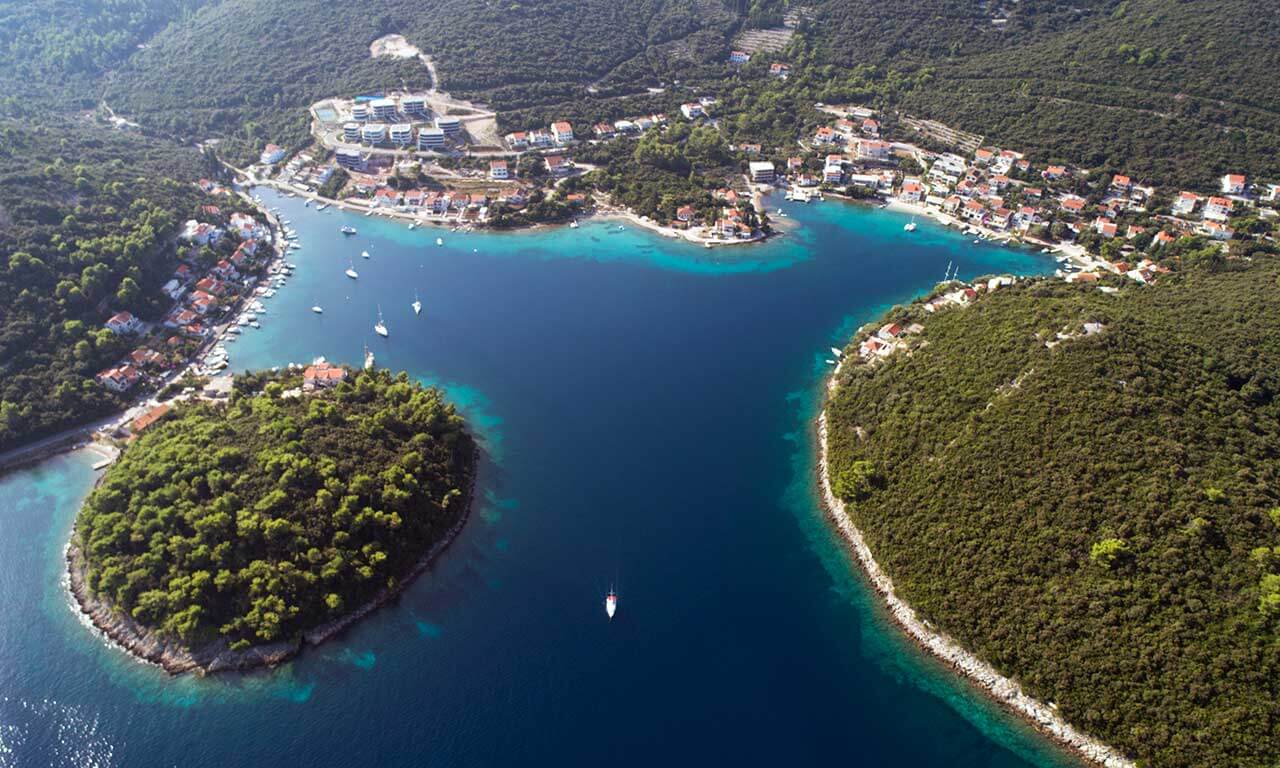
Zrnovska Banja where the turtle was spotted floating © Visit Korcula
Dr. Mario Gavranović, head of the VET VISION clinic in Split, confirmed that the turtle arrived on Friday night. „It should arrive in an hour or two. The propeller injury is an old wound and I will first have to examine it to see what is the proper way of treatment“, said Dr. Gavranović.
When contacted on Saturday morning to provide more information on what happened to the turtle, dr. Gavranović wasn't in his office. As confirmed by Aquarium Pula, the reason was Gavranović took the turtle to the aquarium which also has a Marine turtles rescue centre.
"The turtle is alright, on its way and should be in the Centre around midday", briefly confirmed Aquairum Pula.
Pula's rescue centre has been active for around 17 years (with turtles being strictly protected in Croatia since 1995 as one of the most endangered animal species), and Morski.hr wrote in 2019 how the centre cured over 100 turtles.
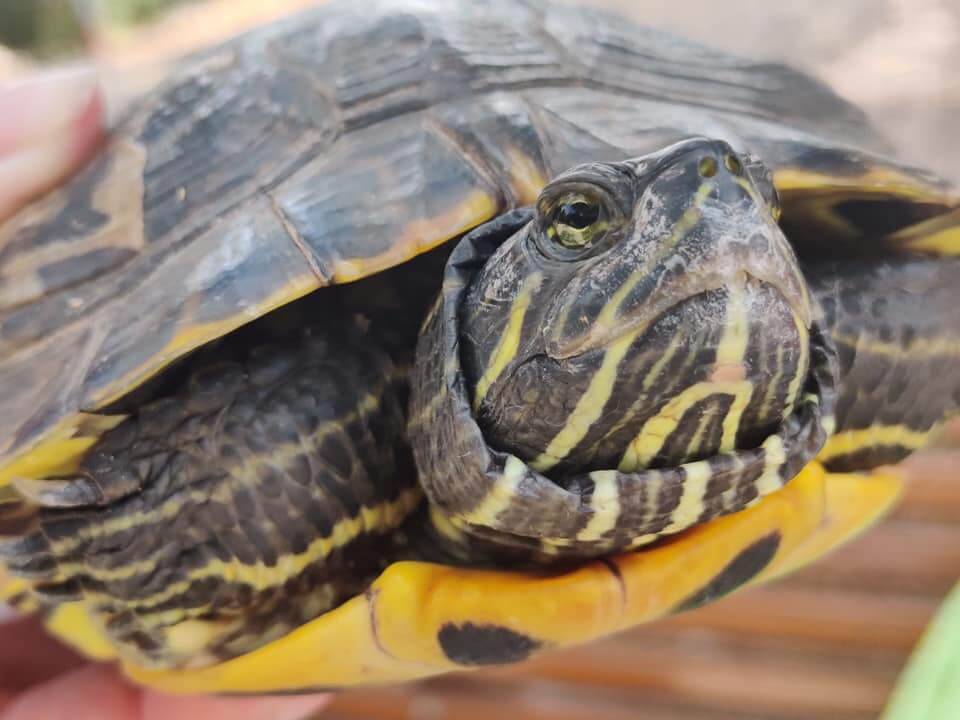
One of the many rescued turtles by Marine turtles rescue centre © Aquarium Pula
Croatia loves its animals
With vets displaying their expertise, locals on Korčula once again demonstrated their compassion and big heart when it comes to animals. And that compassion is not different from the general mood in Croatia.
With the nourishing of the recently deceased stork Malena being the most famous story of love between Croatians and animals, there were plenty of other examples too. From rejoicing every time whales or dolphins are spotted, when sheep visited the Zadar mall or when a Croatian reality TV star Jasmin Kunišinac raised a fox.
Unfortunately, Croatia also records cases of animal cruelty, such as the poisoning of cats and dogs, and each time Croatian public met it with a fierce backlash and anger for such acts.
Despite quite often arguing about everything imaginable and unimaginable, Croatians also express solidarity with each other when things get tough. For instance, many cities canceled their new year celebrations and relocated the money to Petrinja following its earthquake, as well as Croatian entrepreneurs too. But, many more instances of help were noted over the years.
Learn more about Korčula on our TC page.
For more about animals in Croatia, follow TCN's dedicated page.
Split Pride 2021 Parade held this Saturday, Covid Certificates Mandatory
July 15, 2021 - The Split Pride 2021 event will be held this Saturday with a procession and entertainment that lasts until the late evening hours.
The 10th Split Pride will take place on Saturday, July 17. The gathering begins at 5 pm at Bedem Cornaro behind the Gallery of Fine Arts, and the procession starts at 6 pm. The expected return to Bedem is at 7 pm, followed by an entertainment program until 11 pm.
"We tried to make the procession as beautiful and colorful as possible and we chose excellent performers. But we must not forget that Pride is not just colorful and fun, Pride is a protest. For the tenth time so far, the Split LGBTIQ + community and supporters are taking to the streets in an organized manner, protesting against the prejudices they are surrounded by, raising the awareness of their fellow citizens about their existence, and celebrating all their differences and identities. The big thing for Split Pride is the mayor's announcement that he will join us in the procession. We are happy to have a man at the head of the city who is trying to understand our problems," said Split Pride for Dalmatinski Portal.
This year, the Pride organization was a bit more demanding than before because they had to harmonize it with the currently valid measures of the Civil Protection Headquarters.
"We invite other fellow citizens to join us, but before that, we must mention a few important things. Unfortunately, we are still living in a pandemic. Due to the currently valid measures, we will only allow people with Covid certificates - people with confirmation that they have recovered from Covid, people with evidence of vaccination, and people with a negative Covid test. We don’t want to risk becoming the focus of a pandemic. We are aware that for this reason there will be fewer people gathered and we are sorry for that.
Those who wish can join the parade when it leaves. No one can forbid you to walk in public areas, but please adhere to the measures and keep your distance. Take care of your safety and the safety of your family members," sid the organizers of the pride parade.
For more on lifestyle in Croatia, follow TCN's dedicated page.
Joe Bašić on Ultra Europe Return: "This Festival Means Too Much for Split"
July 13, 2021 - The Ultra Europe return may happen as soon as next year, as organizer Joe Bašić speaks of its importance to Split.
If the Ultra Europe festival had not been postponed for the second time in a row last weekend, Split would have been the center of international entertainment again, according to the organizers of this festival, which brought world-famous DJ stars and thousands of guests to Split.
Ultra Europe could be organized next year, however still under special measures. This was announced by the organizer of the Ultra Europe music festival, Joe Bašić, who also told Radio Split that DJs are working hard in the studios in the meantime, reports Slobodna Dalmacija.
"Considering everything that is happening in the world, I think that we will definitely bring Ultra back to Croatia next year. I am convinced that the pandemic will be under control and that these measures, COVID passports, testing, and more will be part of our story, but will enable us to hold the festival still," said Bašić about Ultra in Split.
The pandemic has thwarted plans for the festival again this year, but intensive preparations for 2022 are already underway.
"We will certainly pay more attention around the guests themselves; the measures will play a big role. I am convinced that through this year, all the countries of the world will prepare for such a life, we will not get rid of COVID, but we will have to learn to live with it. We, as the organizers of the largest festival in the world - Ultra, have the opportunity to prepare everything at a level that will enable the arrival of this large number of people again in Split," he said.
He also commented on the significance of the festival for Split, but also for the whole country.
"Ultra Europe was the engine of development of Split and Croatia, as far as the destination is concerned. It also attracted people who would not otherwise come to Croatia. However, I think that there is definitely a shortage of guests worldwide, especially in Split. Renters, hoteliers, and the airport all comment on how much Ultra is missing and that it is essential to return those numbers from 2019," claims Bašić.
Meanwhile, he says, the performers are not resting.
"We are in touch with all the DJs and artists we work with. They definitely miss live performances. Now they are more in their studios, but they can't wait to come to Croatia again for Ultra Europe. We will do our best to bring the Ultra Europe Festival back to Croatia in 2022; I believe in that. The energy that we have all experienced in the last seven years in Split, I believe that it will return, that the whole world will dance with us again in Croatia," concluded Joe Bašić.
For more on lifestyle in Croatia, follow TCN's dedicated page.
Split Eyesore Almost Gone? Adris Group Could Begin Works on Marjan Hotel in September
July 12, 2021 - Works on Marjan hotel could begin by Rovinj's Adris Group already this September!
By applying for a building permit on May 3 this year, which was completed on July 5 or became administratively filed, a new important step was made to prepare for the reconstruction of the Marjan Hotel, reports Slobodna Dalmacija.
These data were published in the information system of the Ministry of Physical Planning. Slobodna Dalmacija received confirmation from the owner of the unfinished building on the West Coast, Rovinj's Adris Group, who stated that "in cooperation with the City and relevant institutions, they have completed the necessary documentation for the reconstruction of Marjan, after which the works on the facility itself will begin."
A few months ago, amendments to the location permit to reconstruct a building for catering and tourism purposes, i.e., a tourist facility with 285 accommodation units and a 5-star category, were obtained.
Boris Marelja, the head of the city's Administrative Department for Spatial Planning, Development, and Environmental Protection, said that an e-conference had been launched that will last 15 days, with the participation of public bodies, including HEP, Vodovod i kanalizacija and MUP to make any remarks before confirming the main project. After that part of the proceedings, the neighbors and other parties will have the right to inspect the file, also with a deadline of 15 days.
The speed with which the permit will be issued and become final depends on the possible objections. Of course, Marelja did not want to go into forecasts, and a rough calculation points to 45 days if there are no major objections. According to the information available, there should not be any, primarily because the documentation is well prepared, and it is not surprising if it is known that the Adris Group is a serious and reputable investor in the hotel and tourism industry.
According to the mentioned calculation of 45 days, the first works could follow in September this year. However, it should be reminded that this will not be construction, but the removal of "unwanted" or "superfluous" parts of the building.
Of course, Marjan will not be completely demolished as it was announced in the media, but according to the plans of former owner Željko Kerum and Jerko Rošin, there should be apartments. There is no doubt that the glass will be removed from the facade.
According to the announcement in September last year, the new hotel tower should have a height equal to the previous one after the planned project, but with one floor less as they will raise the individual floors. Raising the floors is logical and necessary to set up installations for various facilities, which did not exist when the hotel was built.
Zagreb-based architectural studio '3LHD' and renowned Italian architect and designer Piero Lissoni are working on the demanding project. In a Jutarnji List statement last year, Sasa Begovic briefly commented on the Marjan project: "We are doing a creative reinterpretation of the hotel built by Perković. We are also planning a smaller number of rooms and terraces with a view."
The designer of the first A deluxe hotel in Split, with 220 rooms, was, in fact, done by architect Lovro Perković. Built in 1963, Marjan soon became the pearl of Split tourism and one of the city's symbols.
In 1979, before the Mediterranean Games in Dalmatia, it was extended, and 10 years later, in 1989, it had its last reconstruction. Soon after the start of the Homeland War, displaced persons and refugees moved in. From 1998 until the beginning of the new reconstruction, it operated with only 30 percent of its capacity.
In 2005, Kerum bought it in a tender for 170 million kuna, three times more than the requested 57 million kuna. A period of big plans and optimism followed when, after four years, a 20-year franchise agreement was signed with Hilton.
However, the owner of the facility was soon elected mayor, and the work of building and renovating the hotel was suspended so that in 2015 everything would end with the bankruptcy of the "Adriatic" company. The bankruptcy lasted for several years, and in November 2019, Marjan was sold to an Istrian company for 324 million kuna.
The Adris group refrained from commenting and replied:
"This is a significant project for Split, but also the further development of the tourist part of our company. Namely, this is a demanding project that will contribute to Split's further tourist affirmation and confirm "Adris" as the leading Croatian company in luxury tourism. Furthermore, as the public knows, and your paper has written about on several occasions, we want to thoroughly renovate the Marjan Hotel and join it to the group of luxury hotels ("Grand Park Hotel Rovinj," "Monte Mulini", "Lone", "Hilton Imperial" in Dubrovnik."
For more on lifestyle in Croatia, follow TCN's dedicated page.
Split Cycled 1.32 Million Kilometers Over Two Years!
July 12, 2021 - The city of Split cycled an incredible 1.32 million kilometers over the last two years, continuously proving that the public bicycle system is a success!
Two years have passed since Split received its public bicycle system, which has proved to be a complete success. Since the beginning, public bicycles in Split have been used for 88,566 hours, and users have cycled an incredible 1,328,485 kilometers, over four times more in the second year than the first. The system has thus profiled itself as a fully accepted new mode of public transport that is faster, healthier, and cheaper to use and has become part of the daily lives of many citizens, reports Dalmacija Danas.
In its second year of operation, the system had a major expansion. From the initial 12, it reached 51 stations, which covered all city districts and all important institutions and increased the number of bicycles from 86 to 280 bicycles.
All this has resulted in a large increase in users and rentals. The system currently has 21,848 registered users, of which 80 percent are domestic. Since the beginning, a total of 240,784 rentals have been realized, of which almost 200,000 in the second year alone, which is over four times more than in the first year of operation.
Split Parking said that due to the increase in the number of users in the past year, they also worked on education, so BicikliSTički etiquette was issued, which is also available online so that all traffic participants can be informed how to use the system safely and correctly.
"We plan to continue with the development of the system, and when allowed, to expand it further and connect it with other units within the agglomeration, which we are already working on in cooperation with other partners. We are also thinking and working on developing new functionalities that would make use more enjoyable. For example, last year we introduced a new weekly subscription option, and the annual price for all users has remained the same and is the cheapest form of public transport. For 200 kuna per year, you have an unlimited number of free rides of up to 30 minutes. We believe that the development of cycling infrastructure will accompany the development of the public bicycle system to ensure that all users enjoy cycling as safe as possible," said Marko Bartulić, director of Split Parking.
"Work is also underway to install surveillance cameras at stations to prevent damage by irresponsible individuals on bicycles. Fortunately, they are in the minority, and such incidents are more the exception than the rule. Most users and citizens are responsible for the system since it is common and available for everyone to use," concluded Split Parking.
The city of Split is still at the top of the region in terms of figures. May 2021 saw a record number of rentals (36,623), while on June 2, 2021, the record daily number of rentals was achieved (1634).
No less important is the fact that we protect the environment by using this form of transport, and citizens who have cycled instead of cars in these two years have contributed to reducing emissions, i.e., ensured that 332.12 tons of CO2 are less emitted into the atmosphere.
For more, follow our lifestyle section.
800 Plant Species on Marjan in Split, Whole of Great Britain Only 1,500
July 5, 2021 - Did you know there are 800 plant species on Marjan in Split alone, while the whole of Great Britain only has 1,500?
To find treasure on Marjan, it is enough to walk carefully along its paths, glades, and hidden corners, absorbing the plant world whose diversity makes Split richer than imagined, reports Slobodna Dalmacija.
Namely, the expedition of volunteer researchers led by Igor Belamarić, landscape architect of "Parks and Plantations," and Dalibor Vladović, curator of the Natural History Museum, found that the outskirts of the city reveal as many as 800 plant species. This is exactly twice as much as expected, Belamarić exclaimed.
"We are making the first detailed vegetation map of Marjan. This research is preparation to see what we are dealing with. Yes, we can say - this is good, this is bad; a path should be made here, and a detour here; protect these plant species and remove these. We will see the differences between the north and south sides, loose and compacted soil, certain parts of the forest. What happens in the vegetation when there are fewer trees and, finally, what is the human impact," Belamarić added.
He points out that this is a project "VEUlonting for better learning," funded by the EU, through the program of the European Solidarity Force and the Agency for Mobility and EU programs, designed and applied by scouts volunteers of the Split Scout Association, uniting in their efforts with "Parks and Plantations" and the Natural History Museum, with the support of the Public Institution for Marjan Park-Forest Management, which will remain the database of collected data.
"We hope that it will provide them with an approach that is somewhat wider than forestry because Marjan is still a park-forest," adds Belamarić, emphasizing that the support of former mayor Andro Krstulović Opara and the Administrative Department for Communal Economy and Police was crucial.
So far, the peninsula map has been shown in one or at most three colors, which indicate the predominance of a particular species. However, new findings show that there is considerable diversification within it.
"It is already possible to find up to 40 plant species within 10 sqm. We analyze and compare different surfaces and determine the dominant species so that we can join each surface to the table," said Belamarić.
Since November last year, Spaniard Estela Rey Pico has been involved in this botanical story, and she has mastered the craft on projects dedicated to environmental protection.
"We explore and enjoy. We write tables, keep photo documentation and try to determine the percentage coverage for each plant we notice. Although it has become sweltering hot, this is still a dream job and an interesting and rewarding experience.
It was really unique to follow the forest from month to month, from week to week, to watch the plants sprout, grow and bloom," the volunteer said, adding that at first they didn't even know the names of the plants, so they devoted themselves to learning in the first months to start mapping with the arrival of spring.
She is pleased that they were joined by Marie Sole Vespasiano, a biologist from Naples, who ended up in Split thanks to her contribution to the research of antiaging molecules at MEDILS.
"I love Split, and I am happy that I can get involved in such activities," said Vespasiano. The remaining two volunteers have an enviable knowledge of the terrain.
"When I came, I knew nothing about plants, and now I got a chance to meet them and see them at all stages. Igor or Professor Dalibor are with us every time, so we can always contact them if we are unsure what a plant is called.
No matter how much we have learned, and now that we are working on a section where we find maybe 15 different species, we have to ask for the name of a few. Marjan really has so many types," said Pablo Garces Lazaro.
"Our initial intention was to work here with children through other projects with scouts, and we applied for that. But due to precautionary measures against the spread of the pandemic, we were offered this alternative, which we reluctantly accepted," said Miguel Iglesias.
"We counted 19 different species. This is slightly below average for particles like this. But here we also find these beautiful yellow flowers. Mexican prickly pear came here some 100, 200 years ago and created a problem for us because it is invasive and steals space from indigenous species. It has spread along the entire southern side, so it should be removed to protect our native species," he stated.
The map will, among other things, give an insight into the distribution of invasive species, which will then be proposed to the authorities for removal, and the scouts will offer them their organizational skills and volunteer contribution.
"This is called spatial rehabilitation, i.e., landscape care measures, which are an obligation following a decision of Parliament. One of the main things today is the extinction of plant species. Some announcements say we will lose an eighth of them by 2100.
We try to preserve them as long as possible so that we do not look for seeds later in the herbariums and pray to God that they are still alive to return a plant to nature.
In principle, people think that national parks should be protected, which is fine. But, still, I think that nature should be protected outside protected zones as well," Belamarić said and added that we are not recording any extinction of plant species on Marjan yet.
According to him, these 800 recorded speak in favor of enviable biodiversity, especially when you consider that Great Britain has 1,500 species. However, he says that there is still a lot of work ahead of them, and he hopes that in the next school year, some of the students from Split will join them, who were prevented from participating in the first phase of the project due to the pandemic.
Stay tuned as TCN intern Anastasia Stasyuk will give a first-hand account of mapping with the scouts on Marjan!
For more news like this, follow our lifestyle section.


